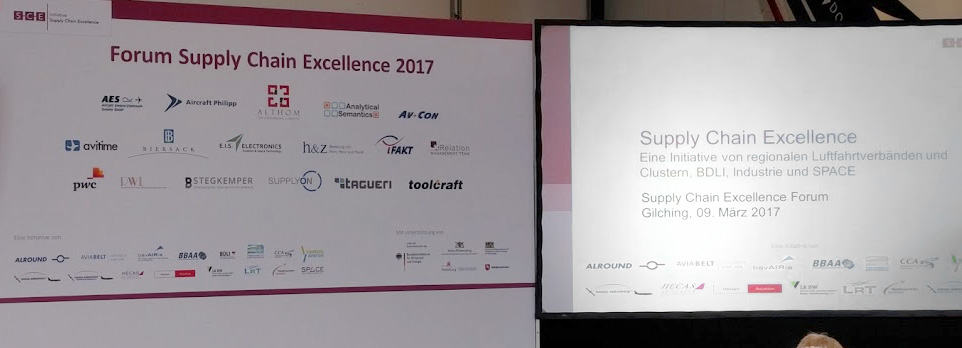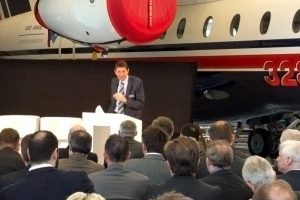Supply chain excellence: Digitalization is a long way off for aerospace SMEs

150 people attended the fourth “Supply Chain Excellence” forum that was held in Gilching on March 9, 2017. It was certainly the right location – close to the German Aerospace Center and the special operations airport in Oberpfaffenhofen. The forum was organized by bavAIRia e.V., which joined together with other regional aviation associations and clusters, the German Aerospace Industries Association, partners from industry, and SPACE Deutschland to form the Initiative Supply Chain Excellence (SCE).
Automotive and maritime industries as role models for supply chain excellence
The forum participants were welcomed by Dietmar Schneyer, Head of the Department of Aviation and Aerospace Technology and Environmental Technology at the Bavarian Ministry of Economic Affairs. He underscored the importance of the Oberpaffenhofen location, which covers the entire spectrum of fundamental research, development and production for the aviation and aerospace industry. With regard to supply chain excellence, Mr. Schneyer brought up the proverbial view beyond the horizon: He noted that there was much to learn from the core processes in the automotive and maritime industries in particular.

Peter Schwarz, the SCE speaker of bavAIRia, explored the role that supply chain excellence has within bavAIRia. In the process, he highlighted the importance of this initiative and provided an overview of its current status. The initiative is a three-year program and is broken down into various areas. On the topic of e-tools in the area of sales & operational planning, it was nice to see that SupplyOn, with its AirSupply industry solution, was also represented.
Different supply chain models for operations and production
This was followed by a very interesting presentation from Michael Santo (h&z Unternehmungsberatung) on digital aviation. He impressively outlined the situation of the different supply chain requirements and differentiated between two models: The first is the digital supply chain in operations – as it relates to companies like Lufthansa. This supply chain has already reached a very high level of digitalization. The challenge here is created by the huge amounts of available data, such as the battle for passenger data.
Mr. Santo described the second model as the digital supply chain in production, and referred to companies like Airbus, Boeing and their suppliers. The challenge here: Over the next 10 to 15 years, more civilian planes will be built than during the past 40 years. As a result, production increases will be required. Mr. Santo’s assessment of Tier 2 and Tier 3 suppliers was particularly interesting. He observes strong regionalization among Tier 2 suppliers. In the process, internationalization has not progressed very far. In addition, Tier 2’s focus on Tier 1 and the OEMs is very strong. He also views the current degree of networking among these companies as a shortcoming: Tier 3 suppliers, are, in his opinion, highly specialized, extended workbenches and are still at the beginning of integration into a digital supply chain.
Discussion and insights into the industry
During the lunch break, all the participants had the opportunity to chat and network. They were also able to gather information about various aspects of supply chain excellence at the various booths.
The afternoon session focused on talks by companies in the industry. Speakers included Hartmut Sievers (Knorr Bremse Bahntechnik), Philip Maracke (German Naval Yards) and Reinhard Häußler and Andreas Stöckle of Airbus Helicopters. These speakers provided interesting insights into business processes. It was somewhat disappointing that the actual topic of supply chain excellence and its implementation and strategic positioning was not discussed.
Despite this very minor omission, the forum was a success. It also demonstrated that many small and medium-sized companies are a long way from digitalization.



